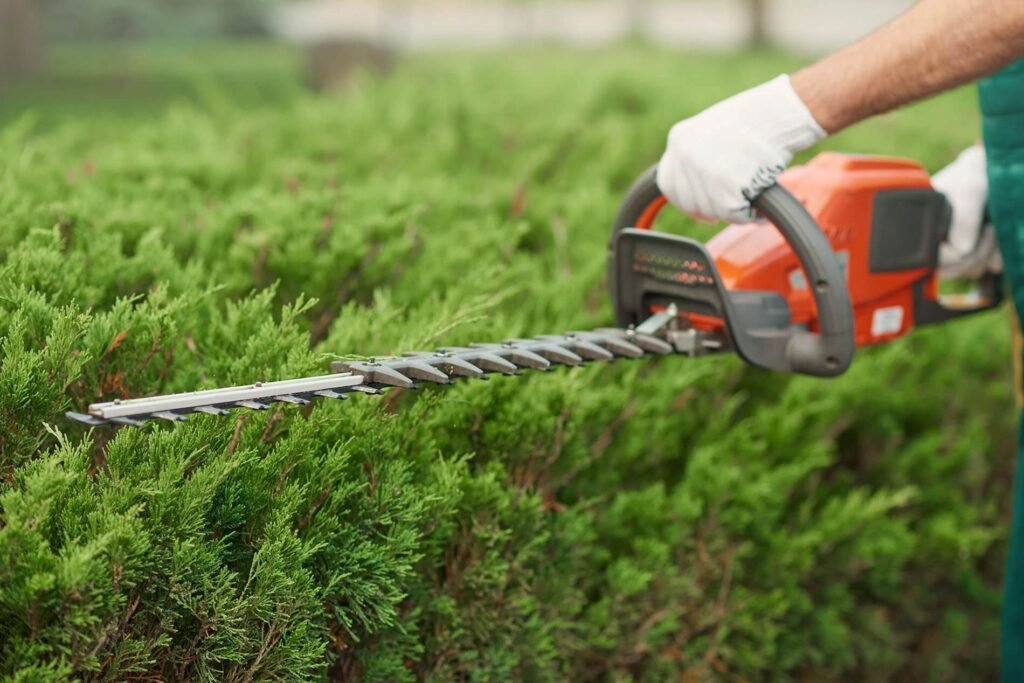If you take great pride in your home and yard, you’ll agree that shrubs are essential to any stunning landscape. Adding that perfect mid-height balance to your greenspace, they bring along a handful of benefits: shade, soil stability, privacy, and of course, a dash of aesthetic appeal with their vibrant colors and interesting textures.
Whether you pick evergreen or deciduous shrubs, they’re like the jacks of all trades in landscaping. They welcome visitors when placed near entryways, act as robust anchors in landscape beds, or even work as makeup to cover unsightly areas, transforming them into visually pleasing spots.
But as with any part of your landscape, shrubs require care. This includes regular pruning, and it gets a tad complicated. As your shrubs grow, you’ll notice some can quickly turn into unruly teenagers without proper care. It leaves you wondering, “When’s the right time to trim these shrubs? Can it be done in the heat of the summer? Or will it be too stressful for them?”
The Perfect Time for Shrub Trimming
Understanding your shrub’s growth habits and bloom time is key to successful pruning. Trimming at the wrong time might stress the plants, causing them more susceptible to pests and diseases.
Here’s a quick guide on when to prune a few common types of shrubs:
- Forsythias: Immediately after flowering
- Weigela: Lightly in early spring and if needed after bloom
- Potentillas: March-early April
- Summer-flowering deciduous shrubs: March-early April
- Non-flowering deciduous shrubs: February-March
When Is The Ideal Time to Trim Spring Flowering Shrubs?
Ask any Asheville Tree Expert, and they’ll tell you that Spring flowering shrubs, such as lilac, azalea, wisteria, ninebark, viburnum, and forsythia, love being pruned right after dazzling you with their blooms. This gives you the best of both worlds – you get to enjoy their floral display and allow them ample time to prep for the next blooming season. These shrubs usually bloom on old wood, so this timing works best.
When to Prune Summer Flowering Shrubs
For those summer bloomers like butterfly bushes, hibiscus, spirea, and some hydrangea species, the trimming season is late winter, before the onset of growth or leaf-out. These shrubs bloom on new wood, setting flower buds on the current season’s growth.
By the way, if you have further questions, you can always hire an Asheville Tree expert to do a free estimate for you.
So, yes, you can trim shrubs in the summer, but with some caution. For instance, spring flowering shrubs already have their shoots in place for the next spring. Pruning these in summer would mean fewer blooms next year. The best practice is to prune them right after they’ve bloomed and before the new shoots have started to grow.
The same principle applies to summer flowering shrubs – wait until after they’ve put on their floral show.
Non-flowering shrubs are more forgiving and can be trimmed any time in the summer to shape or manage their size. But remember, they will grow back slowly during hot, dry, and stressful conditions.
When pruning, cut back to healthy outward-facing buds and remove old flowers, damaged or diseased branches, and any old or scraggly growth. It’s also a good time to decongest your shrub by thinning stems and branches for a more balanced appearance.

